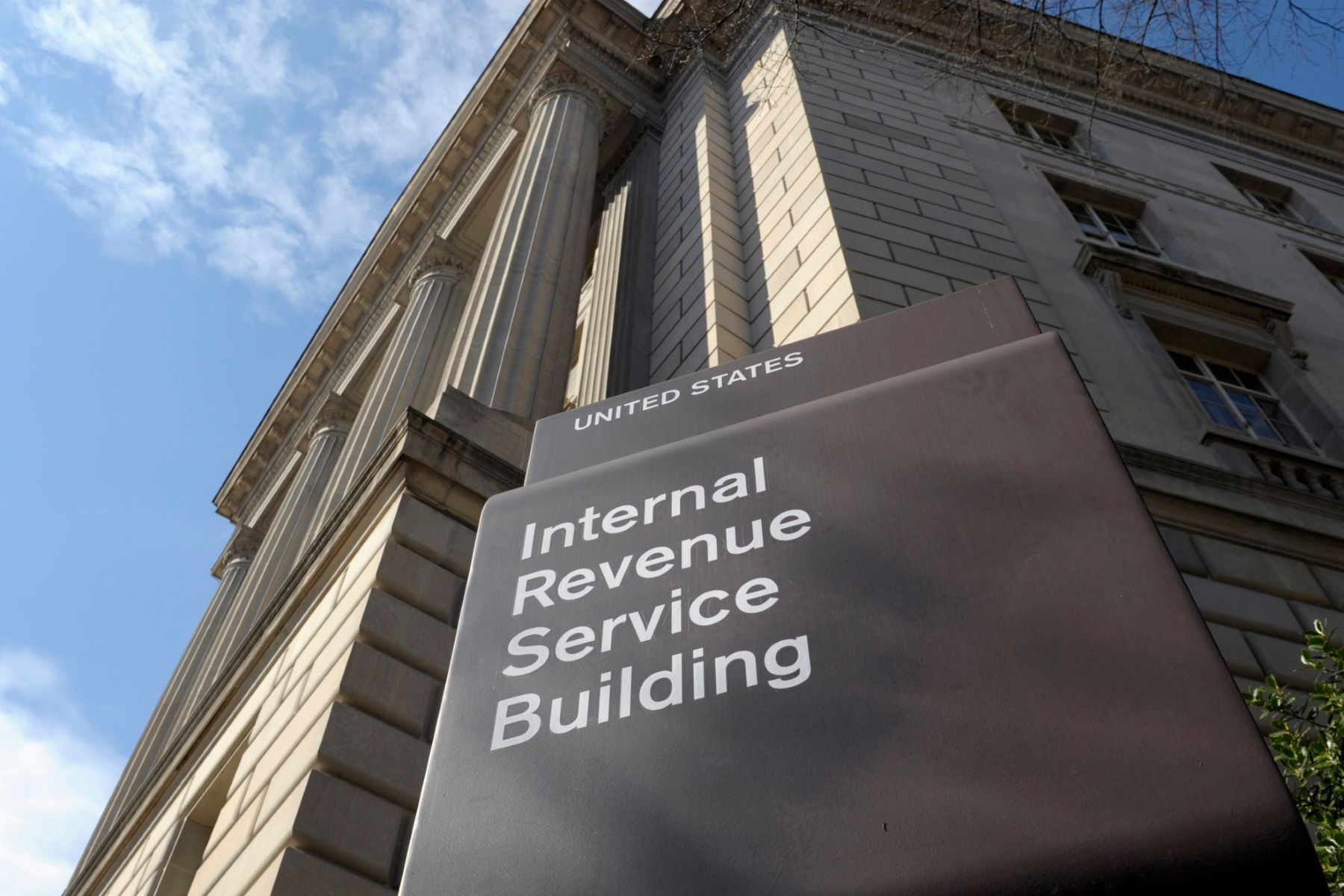

Finance
When Is The Best Time To Sell Cryptocurrency
Published: October 5, 2023
Discover the ideal timing to sell your cryptocurrency and maximize your finance gains. Find out the best time to cash in on your investments in the crypto market.
(Many of the links in this article redirect to a specific reviewed product. Your purchase of these products through affiliate links helps to generate commission for LiveWell, at no extra cost. Learn more)
Table of Contents
Introduction
Cryptocurrency has become a popular investment option, with digital currencies like Bitcoin and Ethereum gaining widespread attention. As more people enter the cryptocurrency market, one question that arises is, “When is the best time to sell cryptocurrency?” Timing plays a crucial role in maximizing profits or minimizing losses. However, figuring out the perfect moment to sell can be challenging due to the volatility and unique characteristics of the market.
In this article, we will explore various factors that can help determine the best time to sell cryptocurrency. From analyzing market trends and news events to considering trading volume and investor sentiment, understanding these key factors can significantly impact your decision-making process. Additionally, we will delve into historical performance, tax considerations, and the implications of long-term versus short-term holding.
It is essential to note that the cryptocurrency market is highly speculative and subject to rapid fluctuations. Therefore, this article is not meant to provide financial advice but rather to offer insights into the factors to consider when deciding on the optimal time to sell cryptocurrency.
Now, let’s dive deeper into the factors that can influence your cryptocurrency selling strategy.
Factors to Consider
When it comes to deciding the best time to sell cryptocurrency, several factors should be taken into consideration. By evaluating these factors, you can make a more informed decision and potentially increase your chances of earning a profit. Here are some key factors to consider:
- Market Trends: The cryptocurrency market is highly influenced by trends. By analyzing the overall market sentiment, you can gain insights into whether the market is bullish (prices going up) or bearish (prices going down). Selling when the market is bullish may result in higher profits, while selling during a bearish market can help minimize losses.
- News and Events: Significant news and events can impact cryptocurrency prices. Keep an eye on news related to regulations, partnerships, technological advancements, and any other developments that may impact the value of a specific cryptocurrency. Selling before or after such events can be a strategic move.
- Trading Volume: Trading volume refers to the number of transactions taking place in a given period. Higher trading volume indicates increased market liquidity and more active participation. When the trading volume is high, it often signifies greater market dynamics, making it easier to sell a large amount of cryptocurrency without significantly impacting the market price.
- Investor Sentiment: Pay attention to the sentiment of other investors in the cryptocurrency community. Social media platforms, online forums, and cryptocurrency-specific news websites often reflect the opinions and emotions of investors. If the sentiment is overwhelmingly positive or negative, it may be an indication of market trends and can guide your selling strategy.
- Price Volatility: Cryptocurrency prices are known for their volatility. While high volatility can present opportunities for profit, it also carries risks. Evaluate the price fluctuations of the specific cryptocurrency you’re holding. If you believe the price has reached a peak or is about to experience a significant drop, selling may be a wise choice.
These factors are not exhaustive, but they provide a starting point for your decision-making process. It is crucial to conduct in-depth research, monitor market trends and news continuously, and consult with financial advisors if needed. Remember, the best time to sell cryptocurrency may vary depending on individual circumstances and risk tolerance.
Market Trends
One of the key factors to consider when deciding the best time to sell cryptocurrency is the analysis of market trends. Understanding the overall market sentiment can provide valuable insights into the direction of prices and help you make informed decisions. Here are a few considerations when evaluating market trends:
- Bullish Market: A bullish market is characterized by rising prices and positive investor sentiment. During a bullish trend, demand for cryptocurrencies tends to increase, contributing to upward price movements. Selling during a bullish market can potentially result in higher profits.
- Bearish Market: A bearish market, on the other hand, reflects falling prices and negative investor sentiment. In a bearish trend, there is generally a higher supply of cryptocurrencies compared to demand, leading to downward price movements. Selling during a bearish market may help minimize losses.
- Market Indicators: Various technical indicators can provide insights into market trends. Common indicators include moving averages, relative strength index (RSI), and Bollinger Bands. These indicators use historical price data to identify patterns and potential trend reversals. Consulting technical analysis can assist in determining the best time to sell based on current market trends.
- Market Cycles: Cryptocurrency markets often go through cycles of expansion and contraction. Understanding these cycles can aid in timing your selling strategy. A market cycle typically consists of four stages: accumulation, markup, distribution, and markdown. Selling during the distribution or markup stage, when prices are high, can be advantageous.
Remember that market trends can change rapidly, and accurately predicting market movements is challenging. Utilize a combination of fundamental and technical analysis, keep yourself updated with relevant news and developments, and consider multiple perspectives to make well-informed decisions regarding the sale of your cryptocurrency assets.
News and Events
News and events play a significant role in shaping the cryptocurrency market. Keeping track of relevant news updates and understanding their potential impact on prices can be instrumental in determining the best time to sell your cryptocurrency. Here are some key points to consider when analyzing news and events:
- Regulatory Developments: Government regulations and policies can have a profound impact on cryptocurrency prices. Positive regulatory news, such as the recognition of cryptocurrencies by regulatory bodies, can lead to increased investor confidence and higher prices. Conversely, negative regulatory news, such as bans or restrictions, can contribute to a decline in prices. Selling before or after significant regulatory developments can be a strategic move.
- Partnerships and Integrations: News of partnerships between cryptocurrencies and well-established companies or collaborations with other blockchain projects can influence prices. Positive partnership announcements often lead to increased adoption and investor interest, potentially driving up the value of the cryptocurrency involved. Selling after the announcement of a significant partnership can maximize profits.
- Technological Advancements: Innovations and advancements in blockchain technology or improvements in the underlying infrastructure of a particular cryptocurrency can impact its value. Upgrades such as faster transaction times, enhanced security measures, or scalability improvements can attract investors and contribute to price appreciation. Selling after positive technological advancements can be advantageous.
- Market News: Stay informed about market news, trends, and sentiments shared by experts and influencers in the cryptocurrency space. Market news can range from price predictions and analysis to discussions on upcoming projects or regulatory changes. By keeping up with the latest market news, you can make more informed decisions regarding the timing of your cryptocurrency sale.
It is crucial to approach news and events with caution, as the cryptocurrency market can often react in unpredictable ways. Not all news will have an immediate or significant impact on prices, and market reactions can vary. Always analyze the credibility and potential impact of the news before making any selling decisions. Consider multiple sources and viewpoints to ensure a well-rounded understanding of the situation.
Trading Volume
The trading volume of a cryptocurrency refers to the number of coins traded within a specific timeframe. It plays a crucial role in determining market liquidity and can provide insights into the ease of buying or selling a particular cryptocurrency without significantly affecting its price. When considering the best time to sell cryptocurrency, here are some key points to consider regarding trading volume:
- High Trading Volume: High trading volume indicates increased market activity and liquidity. In such situations, buying or selling a significant amount of cryptocurrency is relatively easier, as there are more participants willing to trade. Selling during periods of high trading volume can help ensure that you can sell your cryptocurrency quickly and at a fair market price.
- Low Trading Volume: Low trading volume suggests limited market activity. When the trading volume is low, it can be challenging to sell large amounts of cryptocurrency without significantly impacting its price. In such cases, selling in smaller portions over a period of time or waiting for an increase in trading volume might be a more strategic approach.
- Sudden Spikes in Trading Volume: Be cautious of sudden spikes in trading volume, as they can indicate significant market movements. Sharp increases in trading volume often coincide with important news, events, or changing market conditions. Evaluating the reasons behind a sudden spike in trading volume can help you determine whether it is an appropriate time to sell your cryptocurrency.
- Comparing Trading Volume: Compare the trading volume of the cryptocurrency you intend to sell with its historical data or the volume of other similar cryptocurrencies. A significant increase in trading volume compared to previous periods or higher trading volume relative to other cryptocurrencies in the market may indicate increased market interest and potential selling opportunities.
While trading volume is a useful indicator, it should not be the sole determinant of your selling strategy. Consider other factors such as market trends, news, and price volatility in conjunction with trading volume to make well-informed decisions regarding when to sell your cryptocurrency.
Investor Sentiment
Investor sentiment, which refers to the attitudes, emotions, and opinions of investors in the cryptocurrency market, can provide valuable insights when determining the best time to sell cryptocurrency. Understanding investor sentiment can help you gauge market expectations and potential price movements. Here are some key points to consider regarding investor sentiment:
- Social Media and Online Forums: Social media platforms, online forums, and cryptocurrency-specific communities are rich sources of investor sentiment. Monitor discussions, posts, and comments to get a sense of how others are feeling about a particular cryptocurrency. Positive sentiment, such as excitement and optimism, can indicate a potential increase in demand and prices, while negative sentiment may suggest caution or declining interest.
- Crypto Influencers and Experts: Pay attention to the opinions and insights shared by influential figures in the cryptocurrency industry. Crypto influencers, experts, and analysts often provide valuable market analysis and predictions. Their sentiment can influence market participants and impact cryptocurrency prices. Selling in alignment with the sentiment of trusted influencers may help you make more informed decisions.
- Market Sentiment Indicators: Various sentiment indicators, such as the Crypto Fear and Greed Index, quantify and measure the overall sentiment in the cryptocurrency market. These indicators analyze multiple factors, including social media activity, volatility, and market dominance, to provide a sentiment score. Understanding these indicators can offer insights into the prevailing sentiment and guide your selling strategy.
- Contrarian Approach: Consider adopting a contrarian approach by selling when market sentiment is excessively positive. This approach involves going against the majority sentiment. When investor sentiment becomes overly bullish, it may indicate an overheated market, increasing the likelihood of a price correction. Selling during such periods may help you secure profits before the market sentiment shifts.
It is important to remember that investor sentiment alone should not drive your selling decisions. It is just one piece of the puzzle, and market dynamics can be unpredictable. Combine investor sentiment with other factors like market trends, trading volume, and fundamental analysis to form a comprehensive view of the market before deciding when to sell your cryptocurrency.
Price Volatility
Price volatility is a characteristic of the cryptocurrency market that can present both opportunities and risks for investors. Understanding the level of price volatility and how it can impact the value of your cryptocurrency holdings is essential when deciding the best time to sell. Here are some key points to consider regarding price volatility:
- Volatility Indicators: Use volatility indicators, such as average true range (ATR) or standard deviation, to assess the historical volatility of a cryptocurrency. These indicators measure the degree of price fluctuation over a specific period. Higher volatility implies larger price swings, which may present opportunities for profit but can also increase the risk of losses.
- Identifying Price Peaks and Valleys: Analyze the price patterns of the cryptocurrency you intend to sell. Look for price peaks, where the price reaches a relatively high level, and price valleys, where the price reaches a relatively low level. Selling near price peaks can help maximize profits, while selling near price valleys may result in missed opportunities for higher returns.
- Timing the Ups and Downs: Selling during periods of low volatility may result in smaller price gains or losses. However, during highly volatile periods, significant price movements can occur in a short time. Selling when prices are experiencing sharp increases or decreases can lead to more substantial gains or losses, depending on the direction of the price movement.
- Setting Price Targets: Consider setting price targets based on your investment goals and risk tolerance. Determine the minimum price level at which you are willing to sell your cryptocurrency to lock in profits or cut losses. Price targets can help you make disciplined selling decisions and prevent emotions from driving your actions in the face of volatility.
Price volatility is inherent in the cryptocurrency market’s nature, driven by factors such as market sentiment, news, and market manipulation. Make sure to analyze the volatility within the context of broader market trends and take a measured approach when deciding the best time to sell your cryptocurrency holdings.
Historical Performance
Analyzing the historical performance of a cryptocurrency is a valuable tool when deciding the best time to sell. By studying past price movements and performance patterns, you can gain insights into potential future trends. Here are some key points to consider regarding historical performance:
- Price Patterns: Identify recurring price patterns in the historical data of the cryptocurrency you are holding. Common patterns include uptrends, downtrends, consolidation phases, and breakout patterns. These patterns can provide indications of potential future price movements and help you make informed selling decisions.
- Support and Resistance Levels: Look for historical support and resistance levels, which are price levels at which a cryptocurrency has historically struggled to move below or above, respectively. Selling near resistance levels or below support levels can be strategic, as these levels often act as barriers to further price movement.
- Historical Highs and Lows: Evaluate the historical highs and lows of the cryptocurrency’s price to determine potential selling points. Selling near historical highs may be a profitable strategy, while selling near historical lows could result in missed opportunities for recovery. However, be cautious of extrapolating historical performance to predict future outcomes, as market dynamics can change.
- Seasonal Trends: Bitcoin and some other cryptocurrencies have exhibited seasonal trends in their historical performance. For example, Bitcoin has historically experienced higher prices towards the end of the year. Understanding and analyzing these seasonal patterns can help you time your selling strategy more effectively.
While historical performance can provide insights, it is essential to remember that past performance is not a guarantee of future results. The cryptocurrency market is highly speculative and subject to various external factors. Combine historical performance analysis with other fundamental and technical analysis tools to make well-informed decisions about when to sell your cryptocurrency holdings.
Tax Considerations
When deciding the best time to sell cryptocurrency, it’s important to take into account the tax implications of your actions. Cryptocurrency transactions can have tax consequences, and understanding the tax regulations in your jurisdiction is crucial for proper compliance. Here are some key tax considerations to keep in mind:
- Capital Gains Tax: Depending on your country’s tax laws, selling cryptocurrency can result in capital gains tax. Capital gains tax is applied to the profit you make from selling an investment asset, such as cryptocurrency, after holding it for a certain period of time. Be aware of the tax rates and thresholds applicable to your capital gains to ensure you understand the potential tax impact.
- Holding Period: The length of time you hold a cryptocurrency asset can impact the tax treatment. Some tax jurisdictions differentiate between short-term and long-term capital gains, applying different tax rates based on the holding period. Understanding the tax implications for each holding period can help you determine the best timing for selling your cryptocurrency.
- Specific Tax Reporting: Familiarize yourself with the specific tax reporting requirements for cryptocurrency transactions. In some jurisdictions, you may be required to report the sale of cryptocurrency on your tax return, providing details such as the purchase price, sale price, and date of the transaction. Make sure to maintain accurate records of your cryptocurrency transactions to facilitate the reporting process.
- Tax Advice: Given the complexities of cryptocurrency taxation, it’s advisable to consult with a tax professional or accountant who specializes in cryptocurrency taxation. They can provide personalized advice based on your specific situation, ensuring you comply with relevant tax regulations and optimize your tax position when selling your cryptocurrency.
Remember that tax laws and regulations surrounding cryptocurrency are still evolving in many jurisdictions. Stay updated with any changes or updates to the tax laws applicable in your country to ensure your actions comply with the latest requirements. Consulting with a tax professional is crucial to mitigate potential tax risks and uncertainties associated with selling cryptocurrency.
Long-term vs. Short-term Holding
Another important factor to consider when deciding the best time to sell cryptocurrency is the duration of your holding period. The choice between long-term and short-term holding can have different implications for your selling strategy. Here are some key points to consider when evaluating long-term and short-term holding:
- Long-term Holding: Long-term holding refers to holding onto your cryptocurrency assets for an extended period, typically more than a year. One advantage of long-term holding is the potential eligibility for lower tax rates on capital gains in certain jurisdictions. Additionally, long-term holding allows you to align your investment strategy with the long-term vision of the cryptocurrency you are holding, potentially benefiting from significant price appreciation over time.
- Short-term Holding: Short-term holding involves buying and selling cryptocurrency assets within a relatively short time frame, often less than a year. The advantage of short-term holding is the ability to take advantage of short-term price movements and potentially generate quicker profits. However, short-term holding may also subject your capital gains to higher tax rates compared to long-term capital gains in some jurisdictions.
- Risk and Volatility: Consider the risks and volatility associated with the cryptocurrency market. Short-term holding can be more susceptible to market fluctuations and volatility, as price movements over shorter time frames can be more unpredictable. Long-term holding may help you ride out short-term volatility and reduce the impact of market fluctuations on your selling decisions.
- Investment Goals and Risk Tolerance: Align your selling strategy with your investment goals and risk tolerance. Evaluate whether your objective is to make short-term gains or to hold your cryptocurrency assets for longer-term appreciation. Assess your risk tolerance to determine whether you are comfortable with the potential volatility that comes with short-term holding.
The decision between long-term and short-term holding ultimately depends on your individual circumstances, investment objectives, and risk tolerance. It is essential to regularly reassess your holding strategy in light of changing market conditions, news, and developments to determine when the time is right to sell your cryptocurrency assets.
Conclusion
Deciding the best time to sell cryptocurrency requires careful consideration of various factors. By evaluating market trends, news, trading volume, investor sentiment, price volatility, historical performance, tax considerations, and choosing between long-term and short-term holding, you can make more informed decisions and potentially maximize your profits. However, it is important to remember that the cryptocurrency market is highly speculative and subject to rapid fluctuations.
Analyzing market trends can provide insights into whether the market is bullish or bearish, allowing you to make strategic selling decisions. News and events can significantly impact cryptocurrency prices, so staying informed and monitoring relevant developments is crucial. Trading volume indicates market liquidity and can influence the ease of selling your cryptocurrency without impacting its price. Investor sentiment offers additional perspectives and can guide your decision-making process.
Price volatility is a defining characteristic of the cryptocurrency market, and understanding and utilizing it effectively can lead to more profitable selling strategies. Examining historical performance, support and resistance levels, and price patterns can shed light on potential future trends. Tax considerations are essential to comply with regulations and optimize your tax position when selling cryptocurrency. Additionally, deciding between long-term and short-term holding depends on your investment goals and risk tolerance.
Ultimately, the best time to sell cryptocurrency will vary depending on your individual circumstances and market conditions. It is recommended to conduct thorough research, seek professional advice if needed, and stay updated with the latest market news and trends. By carefully evaluating these factors, you can make informed and strategic decisions regarding when to sell your cryptocurrency assets and potentially enhance your overall profitability in this dynamic and evolving market.














